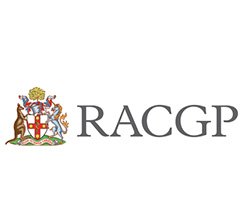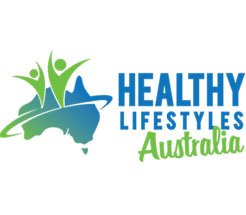Bone Muscle Pain
- Common Musculoskeletal Conditions
- Arthritis
- Osteoporosis
- Back Pain
- Exercise Physiology
- Accredited exercise physiologist (AEP) vs Personal trainer
Our doctors see many musculoskeletal conditions. These include:
- Age or degenerative-related bone issues
- Trauma-related bone issues
There can be many other triggers for discomfort or pain related to your joints, muscles and limbs, so for answers and information, we recommend making an appointment with one of our doctors.
Common Musculoskeletal Conditions
It is estimated that 30% of the Australian population suffer from some form of pain related to musculoskeletal conditions.
The most common causes of musculoskeletal pain are:
- Arthritis
- Osteoporosis
- Back Pain
Arthritis
Arthritis is an inflammation of the joints. It causes pain, stiffness and disability and is very common. It affects both adults and children, and can cause chronic pain.
About your joints
A joint is situated where two bones meet. Joints allow movement and flexibility of various parts of the body.
The movement of the bones is caused by muscles which pull on tendons that are attached to bone. Cartilage covers the end of bones. Between the cartilage of two bones that form a joint there is a small amount of thick fluid called synovial fluid. This lubricates the joint, which allows smooth movement between the bones.
The synovium is the tissue that surrounds a joint. Synovial fluid is made by cells of the synovium. The outer part of the synovium is called the capsule. This is a tough membrane that gives the joint stability and stops the bones from moving out of the joint. Surrounding ligaments and muscles also help to give support and stability to the joints.
How does Arthritis Affect You?
Arthritis may affect just one joint (knee, hip, spine, shoulder, elbow, hands or feet), a few joints, or many joints.
Types of Arthritis
The two most common types of arthritis are:
- Osteoarthritis
- Rheumatoid arthritis
Causes of Arthritis
There are many different causes of arthritis, including:
- Age and wear and tear ofjoints
- Septic arthritis
- Ankylosing spondylitis
- Gout
- Calcium pyrophosphate deposition
- Psoriatic arthritis
- Reactive arthritis
- Juvenile idiopathic arthritis
Symptoms of Arthritis
The symptoms of arthritis vary depending on the nature and severity of the underlying cause. Symptoms can include:
- Joint pain, tenderness and stiffness
- Restricted movement of the joints
- Warmth and red skin over the affected joint
- Weakness and muscle wasting around the joint
Diagnostic of Arthritis
X-rays can reveal if osteoarthritis from degenerative changes is causing your knee hip or joint pain. The diagnosis of osteoarthritis is made from your:
- Medical history
- Physical examination
- Radiology studies (x-ray)
There is no blood test to diagnose Osteoarthritis.
Conservative treatment options
Conservative treatment options refer to the management of the problem without surgery.
Some conservative treatment measures for knee osteoarthritis include:
- Activity Modification and Limitations
- Weight Reduction
- Anti-inflammatory Medications
- Physical Therapy
- Orthotics such as Canes, Braces or Insoles
- Injection of Steroid and Analgesic into the Knee Joint eg: Platelet Rich Plasma (PRP)
Osteoporosis
Osteoporosis is a condition that affects bone strength. (The word osteoporosis literally means "porous bones".)
The bone is made of tough, elastic fibres (collagen fibres) and gritty, hard material (minerals). It is a living tissue and contains cells that make, mould and take back up (resorb) bone.
Initially, as you grow, the bone forms faster than it is resorbed. But, as you get older, this reverse. As a result, from about the age of 35, you start to lose a certain amount of bone material overall.
Your bones become less dense and less strong. The amount of bone loss can vary. If you have a lot of bone density loss, then you have 'thinning' of the bones (osteoporosis).
If you have osteoporosis, your bones can break more easily, especially if you have an accident such as a fall. If you have a milder degree of bone loss, this is known as osteopenia.
Causes or risk factors for Osteoporosis
The exact cause of osteoporosis is not clear. The major risk factors associated with an increase in the incidence of osteoporosis include:
- Age and gender: After the age of 35 years, the body gradually loses bone mass. Hence, the greater the age, the higher the risk for osteoporosis. Moreover, women are four times more prone to osteoporosis when compared to men. Thus, older women over 50 are at a higher risk for osteoporosis.
- Family history and ethnicity: Caucasians, Hispanics and Asians are at an increased risk of developing osteoporosis. This risk is further increased by a small, thin body frame and a family history of fractures. Hence, heredity plays an important role in the development of osteoporosis.
- Endocrine disorders: Endocrine disorders such as hyperparathyroidism and thyroid problems increase the risk of osteoporosis by adversely affecting the process of bone formation.
- Medications: Hormone replacement therapy for prostate cancer or breast cancer, long term corticosteroid therapy (more than 3 months) and some antiepileptic drugs increase the risk for osteoporosis.
- Nutrition and lifestyle: A sedentary lifestyle, smoking, excessive alcohol intake and poor nutrition with a calcium deficient diet make an individual highly prone to develop osteoporosis.
- Eating disorders: These may lead to a deficiency of essential nutrients required for healthy bone and thereby increase the risk for osteoporosis.
Diagnosis of Osteoporosis
At present, there is no national screening programme in Australia for osteoporosis. However, if you have a risk factor, our practice may ask you questions to see how many other risk factors for osteoporosis (listed above) apply to you.
If you are found to be at an increased risk, or your risk is uncertain, you may be referred for a DEXA scan. DEXA stands for dual-energy X-ray absorptiometry. It is a scan that uses special X-ray machines to check your bone density.
A DEXA scan can confirm osteoporosis.
Treatment for Osteoporosis
The treatment of osteoporosis aims to strengthen the existing bones, while stopping the disease progression.
- Medications: such as calcium and vitamin D supplements, oestrogen for postmenopausal women, testosterone for men, parathyroid hormone shots and bisphosphonates can be prescribed to patients.
- Simple lifestyle changes: such as some healthy, well-balanced diet rich in protein, calcium and vitamin D, regular exercise such as walking and jogging, along with abstinence from smoking and alcohol improve overall bone health and prevent the development of osteoporosis. In patients with osteoporosis, these lifestyle changes may delay the progression of the disease.
Speak to our doctors about your osteoporosis.
Back Pain
Back pain begins to impact patients from 15-20 years of age, with the incidence increasing with age. Back pain affects over 15% of the population.
Causes of Back Pain
Back pain and back problems can be attributed to numerous factors including:
- Age-related degeneration
- Muscle strain
- Displacement of an intervertebral disc
- Other underlying illness or injury
Back Pain Risk Factors
Risk factors include issues with posture and injuries, as well as other diseases such as:
- Osteoarthritis
- Disc disease
- Osteoporosis
- Some genetic conditions
Other factors that may increase the risk of developing back problems include age, physical fitness, smoking, obesity, and the type of work a person does.
Back Pain Treatments
Treatment of back pain will vary according to the diagnosed cause and can involve various service providers. Common treatments for back pain management can include:
- Medication use
- Rehabilitation
- Allied health services
- Spinal surgery
Exercise Physiology
Exercise physiologists are professionals who specialise in the delivery of exercise to help patients get fitter for all-round good health, or to treat patients with chronic medical condition and injuries through exercise.
They have a higher level of training than a general personal trainer at a gym.
Exercise physiologist’s can support clients with conditions such as:
- Obesity
- Arthritis
- Diabetes
- Cancer
- Osteoporosis
- Depression
- Asthma and
- Cardiovascular diseases and more
You might see our exercise physiologist if you:
- Have persisting pain caused by injury or overuse
- Need to improve your heart health
- Require support to rehabilitate following a cardiac event
- Get support to control your diabetes
- Want to prevent prediabetes from progressing to full diabetes
- Want to improve your recovery following cancer treatment
- Want to improve your general health and wellbeing
A specific exercise routine will be prescribed for either fitness or rehabilitation.
Accredited exercise physiologist (AEP) vs Personal trainer
- AEP:
- Four-year University Degree qualified and accredited with national regulatory body
- Allied Health Provider with Medicare provide eligibility
- Specialised in exercise therapy and lifestyle interventions for people at risk of developing, or with existing chronic medical conditions or injuries
- Personal Trainer:
- The Personal Fitness Trainer Qualification, Certificate 4, can be completed in 6 weeks or less
- Qualified and insured to develop and deliver fitness programs to low risk people/healthy populations














